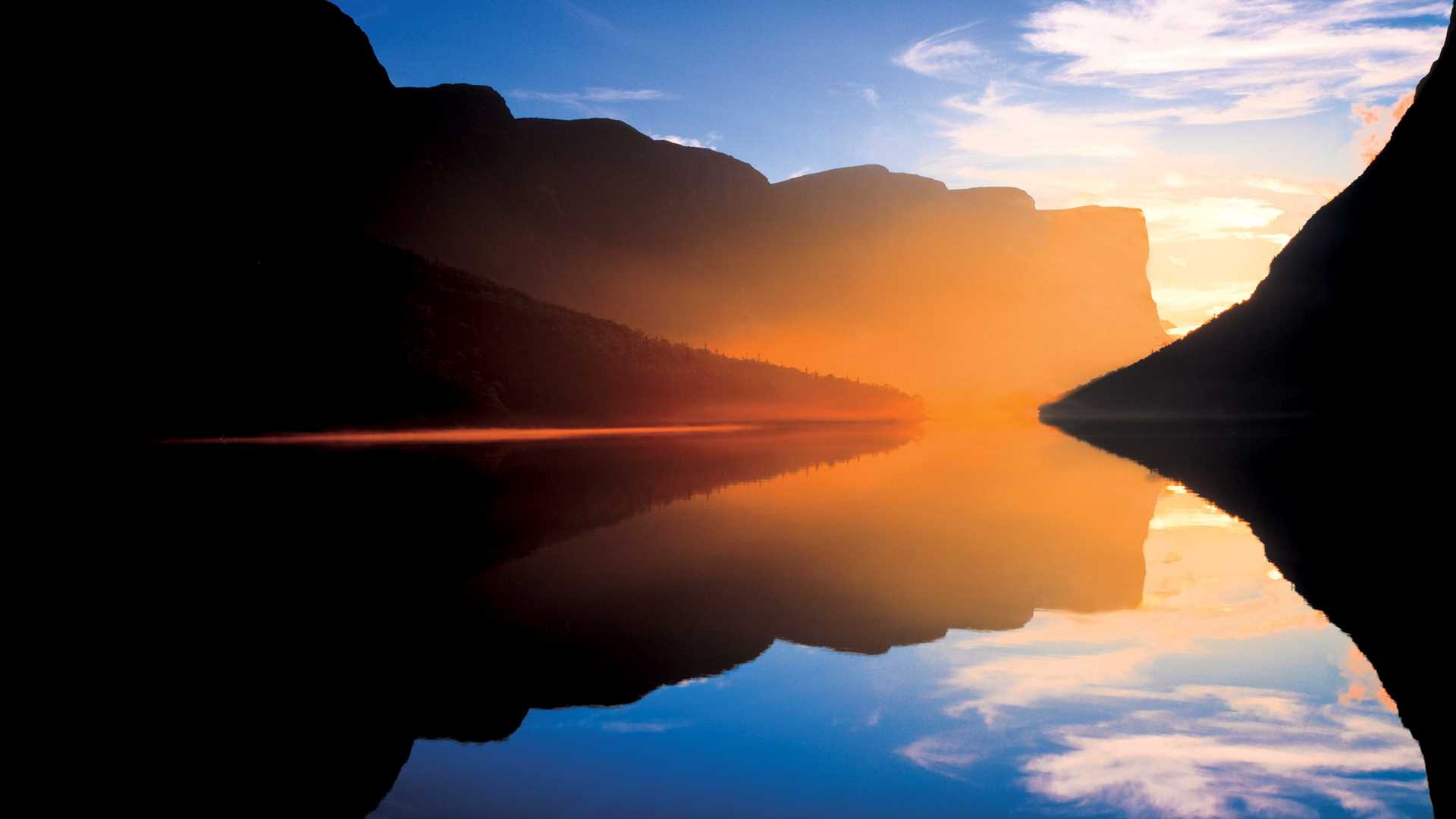When land masses shifted 400 million years ago, they collided at the site of what is now Newfoundland’s Gros Morne National Park. When these massive continents separated again, the Atlantic Ocean was created. These shifting land masses also produced the geological formation known as Tablelands, a red-orange flat-topped peak that was once the floor of the ancient ocean. It was raised during the continental drift and is an exciting place for scientists to study the planet’s geological and biological past. In fact, this distinctive formation helped confirm the theory of plate tectonics and led to the park being named a UNESCO World Heritage site for its important geological story. Get Inspired by Photos, Videos, Webinars, Stories, and Exclusive Offers. Sign Up
Gros Morne is one of the few locations in the world where you can see mantle material at the Earth’s surface. Fossils were formed in the large ocean that used to exist between Africa and North America before it was closed up by plate tectonic action.
More recently (12,000 years ago), glaciers covered the region, carving both fjords and mountains when they advanced. As the ice sheet retreated, Gros Morne’s unusual geology was left in view. The glacially carved freshwater fjords rise sharply out of the cliff-lined water, creating spectacular scenery that also includes clear lakes, waterfalls, beaches, rock columns, valleys, coastal lowland, and alpine plateau.
At approximately 1,100 square miles, Gros Morne is one of the largest national parks on the East Coast. Its two major landscapes—alpine plateau and coastal lowland—create a diverse mix of temperate, boreal, and Arctic habitats that support a unique variety of flora and fauna.
The trail up Lookout Hill travels through a boreal spruce-fir forest above treeline for panoramic views. At this elevation of about 1,400 feet, on a clear day the surrounding fjords, forests, grasslands, fern beds, Long Range Mountains, and the Tablelands are visible. Black bear and moose can often be spotted in these alpine habitats.
Along the coastline, a boardwalk follows coastal bogs where wild blueberries and unusual insectivorous plants—pitcher plants and sundews—grow. Newfoundland and Labrador’s provincial flower, the carnivorous pitcher plant is on every Newfoundland license plate. Its flower forms a basin that traps insects, snails, and other creatures that are digested by microorganisms in the water. This liquid provides nutrients for the flower to survive in this harsh environment. It’s in this way that the pitcher plant can grow amongst the peridotite cobbles. Since it contains many heavy metals, peridotite soil is toxic to plants, so the Tablelands remain starkly barren.
An easy walk of less than an hour is rewarded with a spectacular view of Long Range Mountains; the highlands that once contained a river of ice; and Western Brook Pond, which is technically a freshwater glacial lake.
Canada so values cruising along Western Brook Pond that it’s included in Destination Canada’s Canadian Signature Experiences, a collection of the country’s most exceptional offerings.




